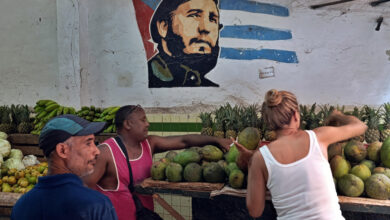Outlook for Purchasing Power and Wages for 2023: Impacted by Inflation
In the latest World Report on Wages, the International Labor Organization (ILO) Makes an Analysis of the Labor Market and Wage Prospects, in the Midst of the Current Economic Situation. Here we tell you What the Outlook is for Latin America

Photo: Freepik
LatinAmerican Post | Erika Benitez
Listen to this article
Leer en español: Perspectiva del poder adquisitivo y los salarios para 2023: impactados por la inflación
Added to the scenario of international economic uncertainty is the increase in inflation, the persistence of the effects of the pandemic, the war between Russia and Ukraine and the global energy crisis. These factors have been decisive in the different dynamics that are currently being experienced and that have contributed to the deterioration of the labor market and the sharp drop in wages in various countries.
According to the latest report from the International Labor Organization (ILO), the crisis is reducing the purchasing power of the middle class, which especially affects low-income households. The war in Ukraine increases inflationary pressures by raising energy and food prices, and this impacts the less favored classes. This is due to the fact that these households allocate a large part of their income to purchase essential goods and services, which tend to be those with the highest price increases.
In this regard, the International Monetary Fund (IMF) presented a study on "Economic Outlook for the Americas", in which it also warns about inflationary conditions and the lagged effects of monetary tightening. Although it is a situation that is being experienced worldwide, the less developed economies are the most affected, within which we can place several Latin American countries.
Inflation in Latin America will remain high for some time, according to projections. Faced with this scenario, the IMF indicates that "monetary authorities must avoid premature easing, they must stay the course and be prepared to act without delay if new inflation shocks occur." Likewise, growth in the region is projected to be 3.5%, some four points less than in 2021; but the biggest drop will be by 2023, when some countries will go into recession.
Impact on wages and people's purchasing power
Rising costs of living and inflation have depreciated the value of real wages. This in turn reduces the purchasing power of the middle class and hits low-income groups to a greater extent, which, moreover, since the pandemic have borne the brunt. According to the ILO report, global monthly salaries decreased in real terms by -0.9% in the first half of 2022. This shows that they have not adjusted enough to offset the increase in the costs of lifetime.
In Latin America in particular, the situation is not favorable. In 2021, wage growth stood at negative values of -1.4% and -1.7 percent in the first half of 2022. Another issue that is being discussed is informal work. It is estimated that between 50 and 80% of the salaries recovered in 2022 in the region are in the informal sector. Due to current economic trends, the problem of the informal economy is expected to intensify.
Measures before the crisis
To cope with this situation, the report highlights that it is key to stimulate productivity in the most affected areas to generate growth and make economies more resilient. “Productivity growth is an important factor conditioning real wage growth,” says ILO.
Likewise, adjustments to the minimum wage in accordance with the challenges imposed by the current economic scenario would help to considerably improve the standard of living of the low-income population. “The fact that 90 per cent of ILO Member States have minimum wage systems highlights the importance of this mechanism as a tool for social justice”. This must go hand in hand with a true social dialogue, in which all social levels and different sectors see their needs represented in the face of the crisis and thus reinforce human capital.
Other compensation measures are those that are aimed at specific groups in society, such as aid or subsidies given by governments to low-income households, tax reductions, among others. Finally, and given the uncertainty of an unfavorable international context, the organization specifies that strategies must continue to be generated to persevere with global financing efforts and the mobilization of resources aimed at advancing the United Nations 2030 Agenda and meeting the Development Goals. Sustainable development.




